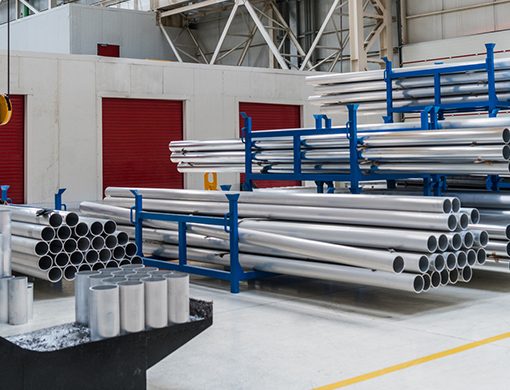Aluminum alloys are essential to a wide variety of applications
From planes to trains, cans and cars—when engineers are looking for a way to reduce weight but retain strength, they often turn to lightweight, durable Aluminum. The white metal only has been manufactured in commercial quantities for just over a century, largely due to the amount of electricity required to produce it. However, despite its relatively new entry into the marketplace, Aluminum has been a part of many industrial innovations, including engine parts on the Wright Brothers’ airplane.
Aluminum is rarely used in its pure state. It’s well known as a lightweight material (it weighs about one-third as much as steel or copper) but Aluminum and its alloys are also easy to cast, forge, machine, roll and extrude. Research and development of Aluminum alloys, which began in the early 1900s, helped enhance Aluminum’s inherent properties and set the stage for the wide variety of industrial and consumer products the material is used in today. Approximately 85 percent of aluminum is used in wrought products, such as rolled plate, foils and extrusions.
Aluminum alloys can contain elements such as Silicon, Magnesium, Copper, Zinc, Nickel, Manganese and Tin. Alloys that contain 99 percent or higher amounts of Aluminum are resistant to corrosion and have high thermal and electrical conductivity, making them suitable for power grid applications. Magnesium is a popular choice for alloying with aluminum because the combination typically creates a material that is moderate to high-strength, weldable and corrosion resistant. Adding Silicon to the melt lowers Aluminum’s melting point, and these Silicon-Aluminum alloys are useful for welding wire and brazing. Alloys that contain Silicon and Magnesium can be extruded to make parts for architectural and structural projects.
Large amounts of aluminum alloys are used in aircraft construction, including Aluminum-Copper combinations and high-strength Aluminum-Zinc materials. Depending on the alloy and the application, processes like heat treating and cold working can be used to further strengthen Aluminum alloys.
The Aluminum Association has been setting the standards for Aluminum alloys since 1954, when the list of alloys was made up of 75 unique chemical compositions. The association currently has recorded more than 530 registered active compositions, and that number continues to increase due to the amount of markets that rely on aluminum components.
With so many choices available, it’s important for material specifiers to evaluate an alloy’s characteristics, such as tensile strength, formability, ductility, weldability and corrosion resistance, to ensure it will perform properly. During the selection process, consulting with a company experienced with alloy manufacturing can help answer questions and troubleshoot problems.
Brooklyn, New York-based Belmont Metals offers a wide variety of metallurgical specialties for effective and economical introduction of elements into Aluminum alloys, as well as alloys that can cost-effectively modify mechanical properties and grain refining. Belmont Metals also produces a variety of aluminum master alloys—alloying elements that contain Aluminum combined with high percentages of one or more elements. Belmont master alloys and hardeners are formulated to provide excellent service in foundries, aluminum mills, ingot producers, centrifugal casters, precious metal alloyers, and refiners and other metallurgical operations.

